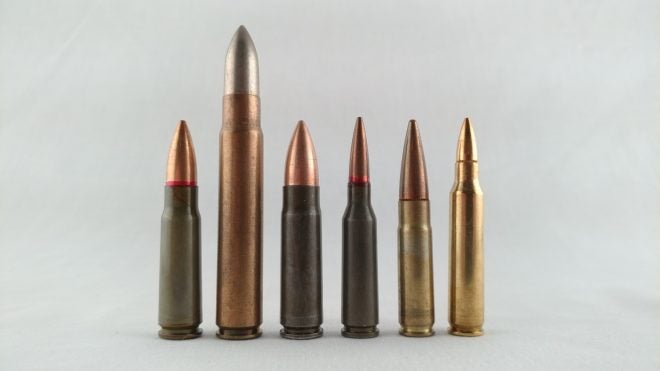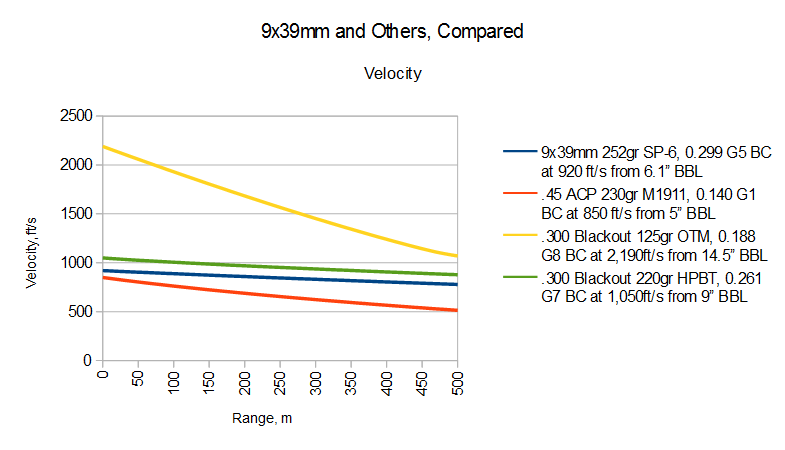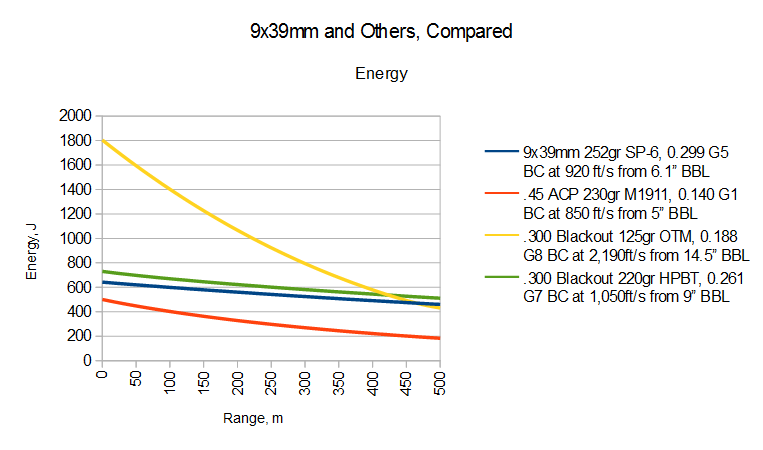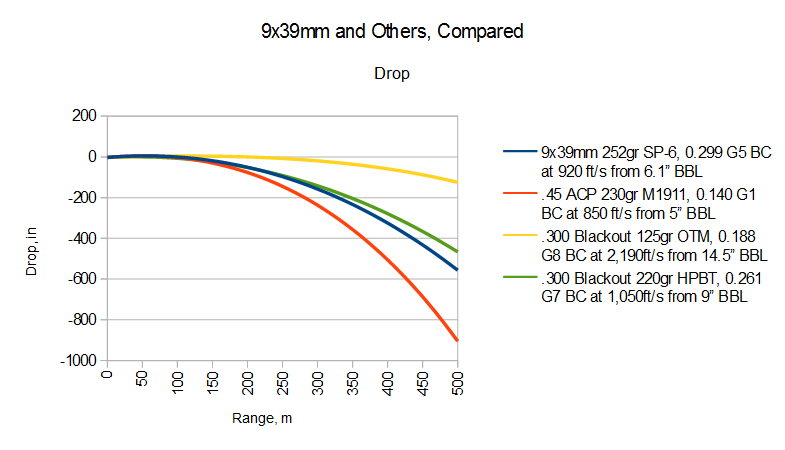Today’s Modern Intermediate Calibers will handle something a little different. While virtually all rounds we have looked at so far were designed primarily for supersonic use, today we will be taking a gander at the Russian 9x39mm round – a dedicated suppressed caliber designed exclusively for the subsonic flight regime, with no supersonic option (yet) available. This begets a question, then: Is the 9x39mm truly an intermediate caliber? To answer this, we should consider a few facts about the 9×39: First, it was designed for carbines and rifles with cartridge overall lengths comparable to common intermediate calibers, like 5.56mm or 7.62×39. Second, it was designed to give substantially better performance than is possible with pistol rounds, including armor piercing effect above that which is normally possible with handgun rounds. Third, it is used more like an intermediate caliber than a pistol caliber, being issued with a whole host of sniper rifles, assault rifles, and other weapons comparable to any other intermediate caliber. Therefore, I would argue that it is an intermediate, albeit possibly the strangest one in common use.
For the ballistics section, we will compare the 9x39mm against .300 Blackout (arguably its Western counterpart, although the Blackout was designed as a dual-purpose subsonic/supersonic round), and the .45 ACP pistol round. Range will be limited to 500 meters, and we will not be taking a look at wind drift for any of these rounds as within their effective ranges it is not very significant. We should also note that the ballistic coefficient for the 9x39mm SP-6 projectile is tentative (and a G5, not G7). It’s difficult to determine exactly what the BCs of the 9x39mm’s projectiles would be, as they are quite a different shape than most. However, since the projectile flies in the subsonic regime where drag is quite low to begin with, even large errors in my BC estimation will produce only small differences in retained velocity and energy within the ranges we are concerned about, anyway. I should advise the more adventurous of you reading this: DO NOT use this BC value (or its corresponding form factor) for ANY rounds that fly in the supersonic flight regime. Doing so would very likely give you incorrect results, as this projectile is not optimized for that velocity band.
From these graphs, we can tell a few things. First, the 9x39mm performs considerably better than the pistol caliber .45 ACP, due to its much higher sectional density and better shape. With regards to drop, energy, and velocity at range, the 9x39mm strikes harder and shoots flatter than the .45, despite having broadly similar ballistics at the muzzle. Compared to the .300 Blackout subsonic, the 9x39mm has lower muzzle energy and velocity, but this gap does not widen as ranges increase (in fact, it closes a little). Drop for both rounds is very comparable (in fact, virtually identical at 200 meters, which is quite far for subsonics). Overall, in terms of their flight alone, the .300 Blackout subsonic and 9x39mm are neck-and-neck, with the .300 Blackout having a slight edge due to its ~120 ft/s higher muzzle velocity. However, we need to also consider that these two rounds are firing very different bullets. The .300 Blackout fires a lead-cored BTHP (OTM). This is fine for knocking on steel targets, but is not a stellar performer against hard targets and barriers due to its soft core and thin jacket. In contrast, the 9x39mm fires a projectile containing a massive hardened steel core that by itself weighs as much as a .30-06 rifle bullet. This allows the 9x39mm to punch through barriers like steel and body armor that would defeat the .300 Blackout (although the Blackout itself does have a surprising degree effect on very light pistol body armors). The SP-6 projectile, for example, is rated to defeat GOST Class 3 armor, which is a Russian armor class in-between NIJ Level IIIA and Level III, which is rated to stop 7.62×39 M43 and 5.45×39 7N6. Also, it is reported to be able to defeat 8mm of RHA steel at 100 meters with enough energy to maintain a lethal wound track, something .300 Blackout OTMs certainly cannot do. Although it is possible that a similar design of steel-cored bullet could be created for the .300 Blackout, such a projectile would have to be much lighter than the 220gr OTM used in this example, which would by necessity mean the muzzle energy and retained energy would be significantly lower than shown here.
So that’s all there is to say on the 9x39mm… Or is it? With the round supposedly coming to the US market soon, is there more to this Soviet subsonic than meets the eye? Stay tuned and find out!
 Your Privacy Choices
Your Privacy Choices



